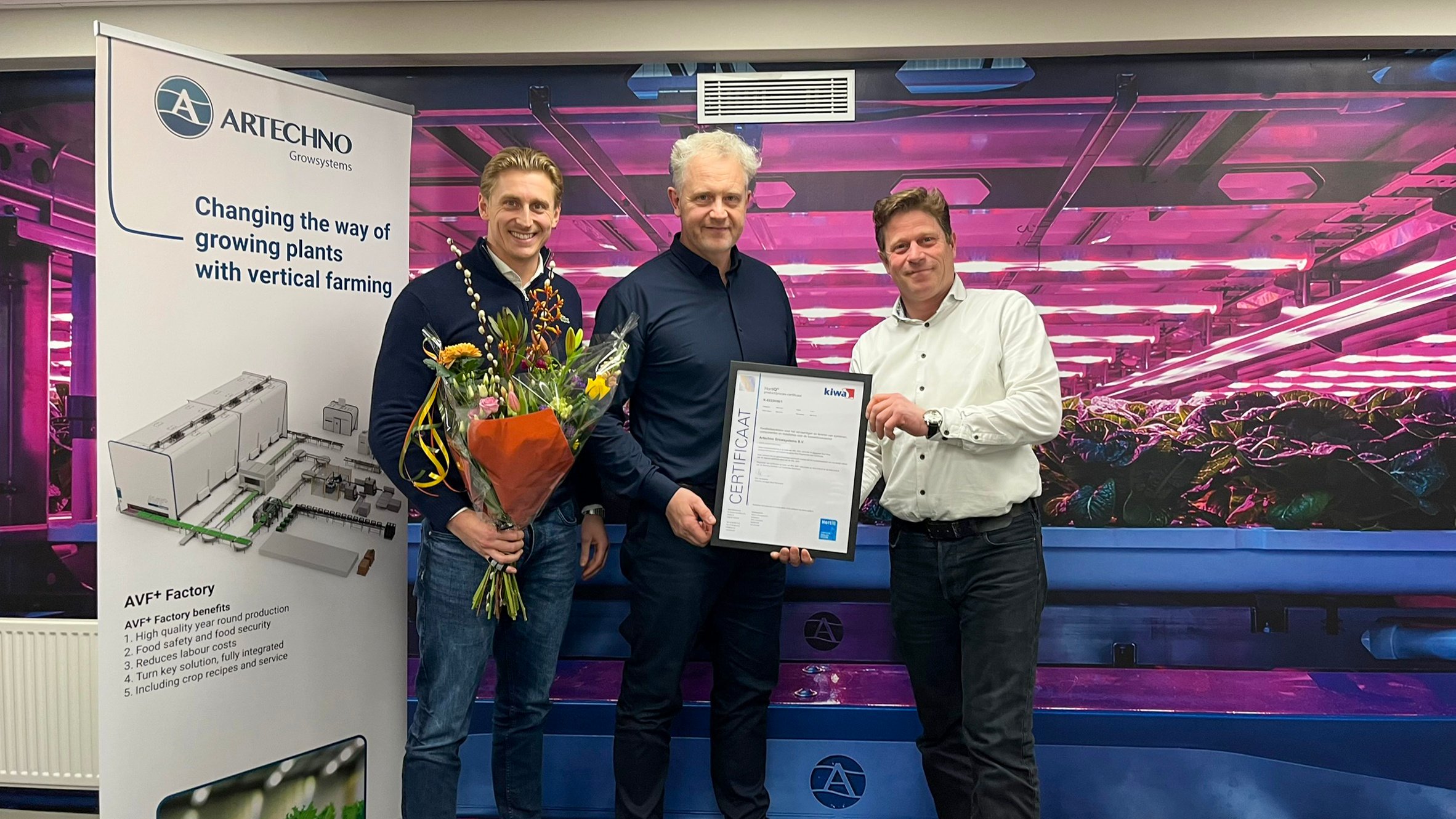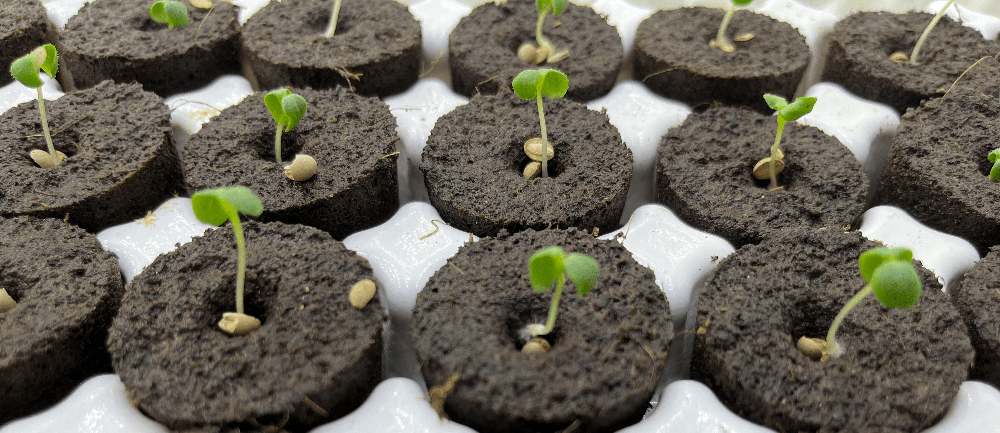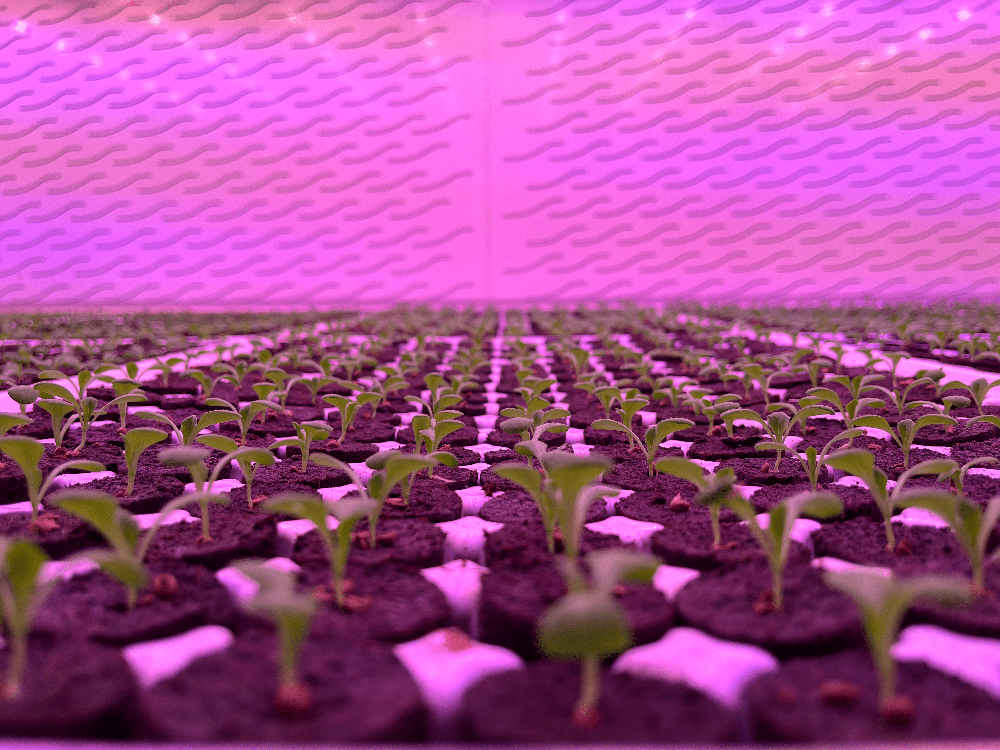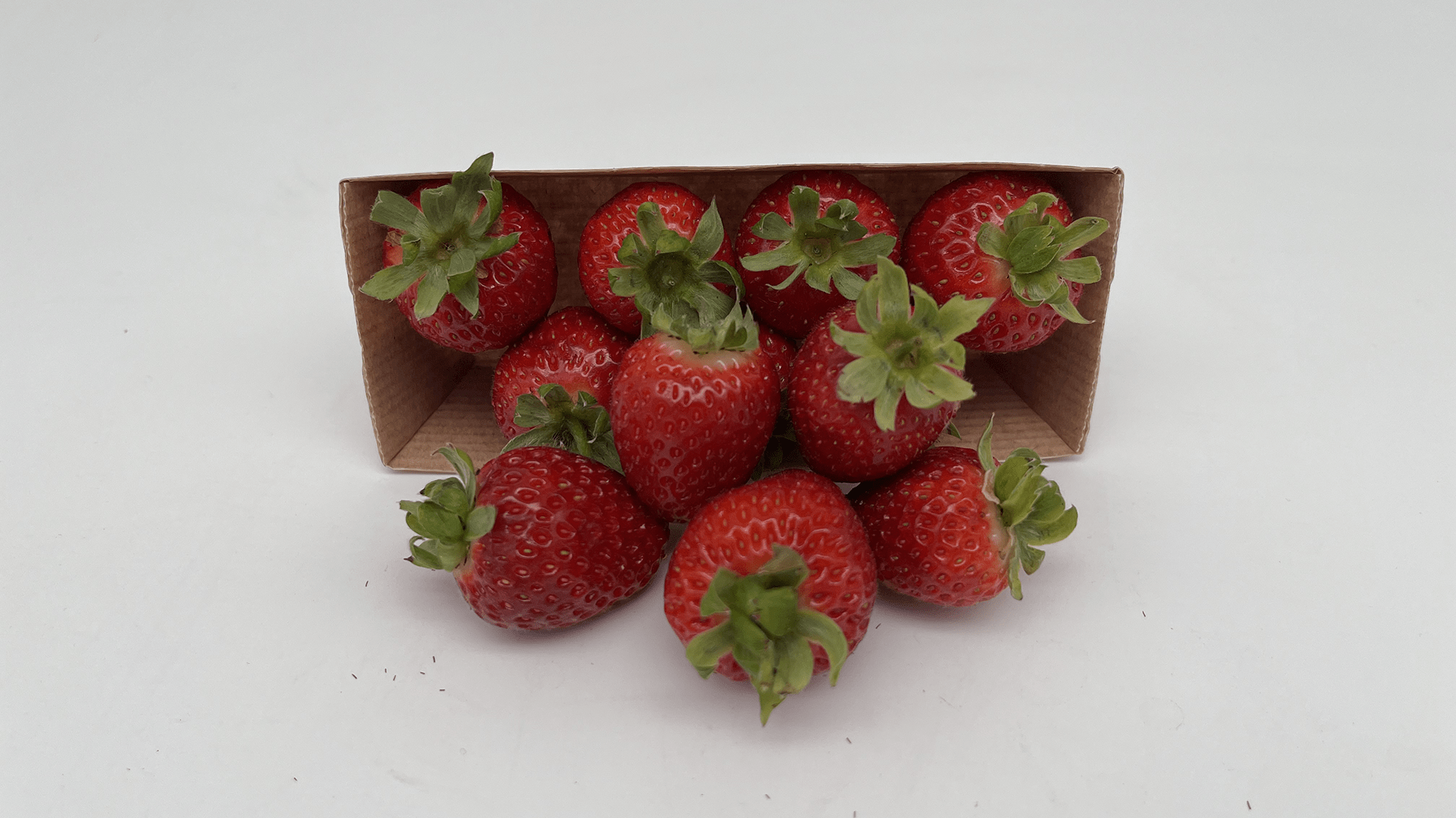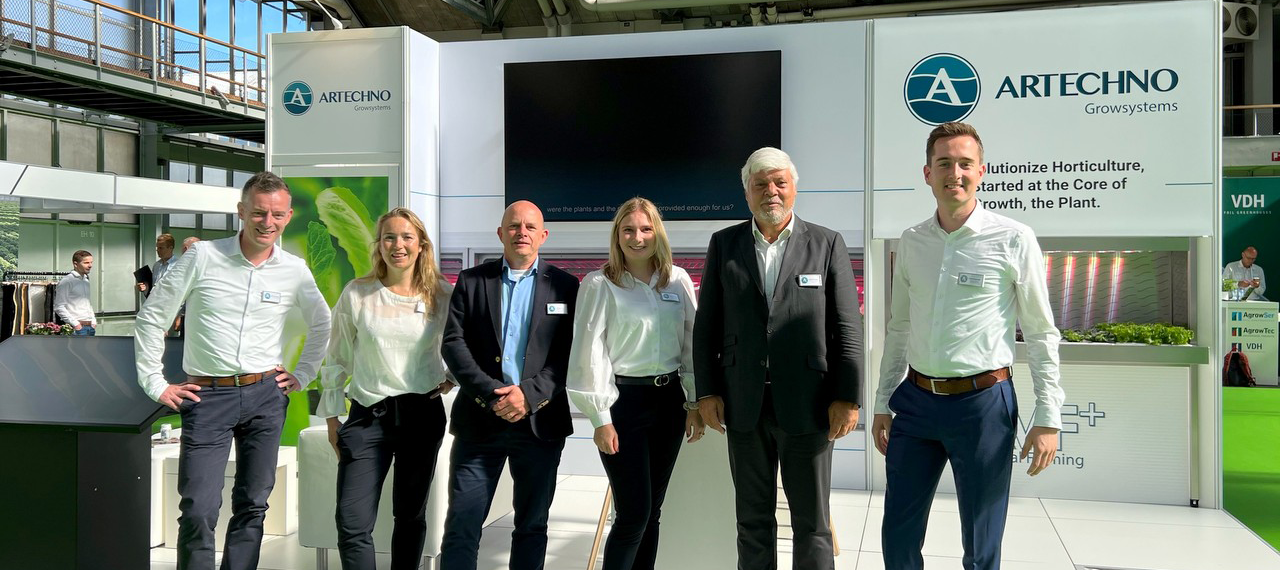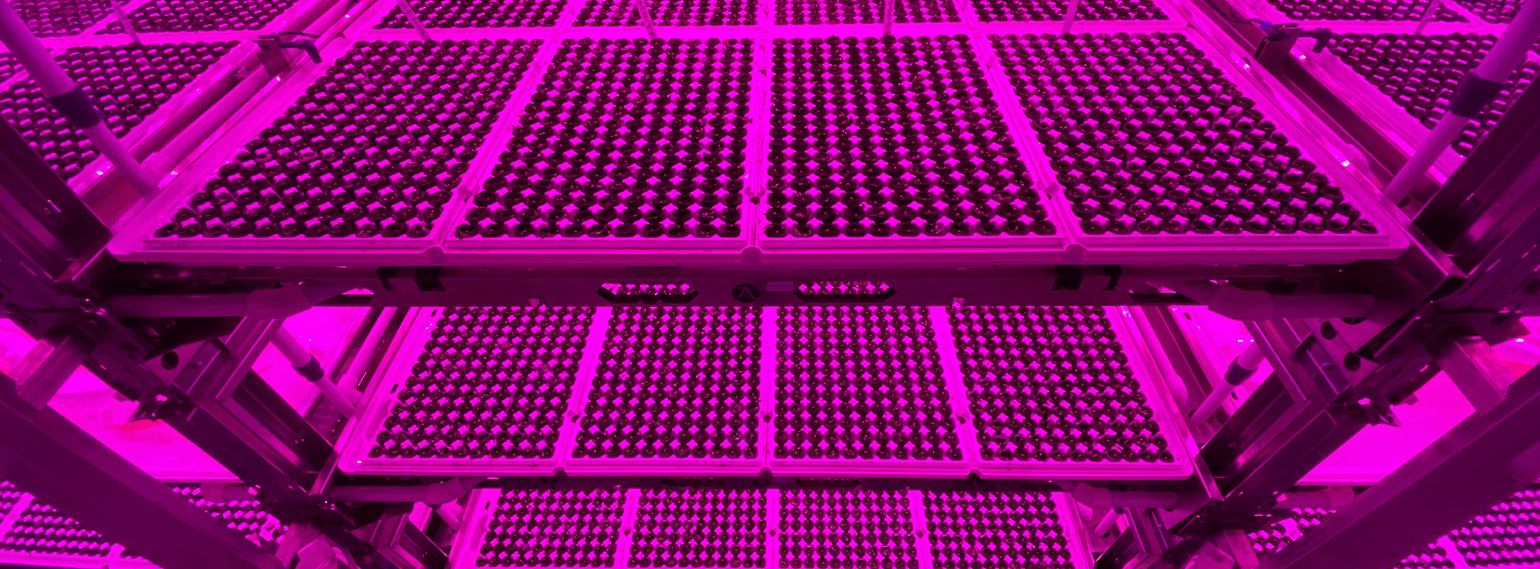All about strawberry vertical farming
The automated vertical farming industry is booming. More and more different crops are being grown in vertical farms.
It once started with herbs and leafy greens, but now the focus is also on strawberry vertical farming. Rudy Van den Berg, Commercial Manager at Artechno Growsystems, tells all about the possibilities of growing strawberries in a vertical farm.
Contents
Why strawberry vertical farming
Why is there so much interest in growing strawberries in a vertical farm?
"Strawberry crops are fragile. Therefore, it is beneficial to grow strawberries as close to the consumer as possible.
You will have less product loss by minimizing the handling and transportation time between the harvest and selling point.
That makes strawberry vertical farming extremely interesting.”
Do strawberries grow well in a vertical farm?
"Yes. The strawberry plant is similar in height to leafy greens and, thus, very suitable for growing vertically. In automated vertical strawberry farms, they can be grown in vertically stacked layers.
This is different with raspberries, as they grow a higher bushel, making it difficult to grow them in vertical layers.”
So why aren't strawberries grown vertically by default?
"To grow strawberries profitably, you must consider the many aspects of a vertical farm.
The route a strawberry plant completes through a vertical farm, and the crop treatments it requires are completely different from the route of, for instance, lettuce.”
But it’s not impossible?
"No, definitely not. In fact, we did a trial with strawberries in our Research Center.
The conclusion from this trial is that we can grow strawberry plants with our AVF+ technology. So, that is very positive. But there are still challenges that we want to sort out before we start offering this technology to our customers.”
What are challenges of strawberry vertical farming?
"There are seven challenges, or perhaps 'issues' is a more appropriate term, that we are currently deciding on and researching further at Artechno Growsystems.”
Challenge 1: cultivation recipes
"We need to develop and optimize the cultivation recipes for strawberry plants. That, for example, implies researching the optimal light and CO₂ levels for these plants.
Some competitors and companies have already researched this; however, that knowledge is not fully disclosed and is also not always applicable to our AVF+ technology. We, therefore, start from scratch and develop the best cultivation recipes in our Research Center, which demands the necessary time investment.”
Challenge 2: Multiple harvests
"Strawberry plants produce multiple harvests. By comparison, if we grow a head of lettuce, the plant comes up once, it is harvested, and then goes to, let's say, the packing line. After that, new seeds have to be planted to grow fresh lettuce.
With a strawberry plant, you pick the strawberries, and after harvesting, the plant has to be brought back into the vertical farm to continue growing.”
Moving toward the plant
"The principle of our AVF+ technology is that the plant moves toward the human or processing line. To facilitate that, we use benches and trays to transport the crops.
In vertical strawberry farms, the human has to go to the strawberry plant to pick the strawberries.
We will have to develop a solution for that, as our current methodology works the other way around. In other words, we must figure out how the strawberry plant will move through the automated vertical factory.”
Challenge 3: Two types of strawberry plants
"We are dealing with two different types of strawberry plants:
- June-bearers
Produce many strawberries over a short period, but none in winter. - Ever-bearers
Produce fewer strawberries but over a longer period of time.
Both types of strawberry plants require entirely different cultivation processes. We therefore have to choose for which plant type to develop a system. You cannot put the different varieties together and choose a mix.”
Little time, lots of strawberries
"At Artechno Growsystems, we have chosen June bearers because this type produces many strawberries within a short time period.
The journey to ripe strawberries"A June bearer needs a certain amount of cold hours before the plant produces strawberries again. The actions in this process include the following:
- You have to take the plant out of the cold and carefully prepare it for cultivation in the AVF+ Compact.
- The plant enters the automated vertical farm (AVF+), where the crop is balanced with all environmental factors, such as climate, nutrition, irrigation, light intensity period, and spectrum.
- Once the clusters have sprouted far enough, the plants are prepared for their "flowering" and "harvesting" stages.
- The pollinated flowers produce strawberries and are removed from the farm when they are at their ripest.
- After the flowering and harvesting stages, the plants are again prepared for cold treatment before a new growing cycle.
Several cycles, thus crop rotations, per year are essential to achieve high production. Consequently, a good supply of planting material is important for the indoor cultivation of strawberries.”
Challenge 4: Crop handling
"Contrary to crops like leafy greens and herbs, strawberry plants require crop handling, including leaf removal.
Crop maintenance has to be carried out outside the AVF+ Compact. So for this, too, the plant has to be taken out of the vertical farm several times.
Of course, we will automate all that, as this will make the automated vertical farm much more efficient.”
Challenge 5: Water the plants
"When you talk about water release, you find that we use hydroponics in our AVF+ Factories. That implies we employ ebb and flow or a constant layer of water in the bench.
Strawberry plants are typically watered with drip irrigation rather than constant water release. A drip system, similar to tomato plants, is utilized for this. The system will dose the amount of water a plant needs in each pot.
We're currently developing the technology to implement this in our AVF+ Compact.”
Challenge 6: Optimum quality
"For a profitable product, you want to grow high-quality strawberries that retain their quality even postharvest. The produce has to be at least as good, preferably better, compared to strawberries grown in a greenhouse or on open ground.
In terms of quality, you can think of:
- Taste
- Color
- Shelf life
- Nutrients
We can create the perfect climate with a controlled environment in an automated vertical strawberry farm to guarantee a high-quality and delicious strawberry. The taste can be influenced by adding the proper nutrients."
Challenge 7: Cuttings
"Worldwide, you see that the best strawberry varieties are vegetatively propagated. In short, this means that a part of a plant is taken, which is then placed in a root environment, and eventually, a new plant sprouts from that.
This implies importing plant material into the growing cell. With automated vertical farms, this is something you rather avoid.
When plant material is imported, you run the risk of bringing in plant diseases, insects, pests, and even viruses.”
The cutting production is organized in-house for high-quality, uniform, and clean propagating material. The mother plants must be raised from tissue culture to guarantee that the plants are 100% free of pests and spores."
Tissue culture
"The best solution for this is to work with tissue culture, the technology of sterile laboratory plants.
Seeds can also be used, but that is not yet common among strawberry growers in greenhouses or open ground.
Seeds would be the best solution for the AVF+ Factory. Yet, the available strawberry varieties still do not meet the highest quality standards in terms of taste, shape, and color.”
Growing strawberries in an automated vertical factory presents challenges; is it still worth it?
"Definitely. There is a massive demand for it because it is such a problematic crop. However, developments like strawberry vertical farms require a lot of time, R&D, and engineering.
At Artechno Growsystems, we must ensure time and capacity are available. We will then build a fantastic solution that offers a myriad of benefits.”
Which benefits do vertical strawberry farms offer?
"Some of the advantages of growing strawberries vertically indoors:
- You get the same consistent output of strawberries year-round every week and, with that, an annual fixed retail price
- You can deliver quality and taste at the highest level
- You save space
- Everything is automated, as opposed to labor-intensive farming
- 100% clean and pesticide-free strawberries
- Future proof growing
- Juicy strawberries are grown close to the consumer
Due to the above, you can eventually turn strawberries into a steady, profitable product.”
Now what about that profitability?
"We are aiming for strawberry production of 40 kilograms per square meter per year, of consistent Class I quality. However, more research is needed to achieve that goal.
The next step is to make the product widely available to the consumer market. In other words, to provide a high-quality commodity product.
In terms of the price level, you have to be in line with the price of strawberries grown in a greenhouse; otherwise, the consumer will simply pass you by. If you look at the Dutch market, we have to aim for 60 kilos per m2 to achieve that goal.”
How are the strawberry developments going at Artechno Growsystems?
"We are already nicely on our way. After several months, we concluded a long-term trial. The main points are developing the grow recipe, choosing the types of strawberry plants, logistics, and automation of the growing process.
That sounds like a lot of work, which it is, but we are making swift progress. Still, we will conduct a second trial this year, working toward proof of concept.”
Sustainable profit
"By the way, don't get me wrong. Technically, we can develop a strawberry farm within a few weeks, but not with the quality requirements we guarantee at Artechno.
We want the solution we offer to work optimally so our customers can be sure to generate revenue.
So we first want to have solved the biggest challenges and actually be able to grow strawberries sustainably before we bring a new technology on the market.”
What is currently the course of action for developing an automated vertical strawberry farm?
"We're not going to solve it all in-house. We are already in contact with several internationally based potential partners to develop the technology collaboratively.
To bring acceleration into the research, we are working with people in the industry who are knowledgeable about strawberries or have already conducted tests.
If we would want to figure out everything ourselves, we won't be ready in five years. Our goal is to finish our prototype in 2024 and, from that point on, within three years, provide the first commercial solution that works optimally and generates revenue for our customers.”
Can you do more with the knowledge you gain in this process?
"We're not going to solve it all in-house. We are already in contact with several internationally based potential partners to develop the technology collaboratively.
To bring acceleration into the research, we are working with people in the industry who are knowledgeable about strawberries or have already conducted tests.
If we would want to figure out everything ourselves, we won't be ready in five years. Our goal is to finish our prototype in 2024 and, from that point on, within three years, provide the first commercial solution that works optimally and generates revenue for our customers.”
How is that resolved?
"We are calling on plant breeders and genetics companies to develop these types of crops further and make them suitable for vertical farming.
Some initiatives are already taken in this respect, such as dwarf tomato plants. However, the supply is sparse, and the quality does not yet match the quality of traditional tomato plants.
But if they develop that, it will become possible to grow multilayer crops like this. Once that happens, we will make massive and essential steps forward in automated vertical farming.”
How is that resolved?
Strawberries are a fragile product. It is, therefore, advantageous to grow strawberries close to the consumer.
Strawberry plants are suitable for automated vertical farming. However, some challenges remain to overcome, including developing a grow recipe.
Vertically farmed strawberries offers numerous advantages, such as providing year-round pesticide-free top-quality strawberries.
Artechno Growsystems is developing a profitable solution for the automated vertical growing of strawberries and will bring that solution to the market within three years.
Are you interested in strawberry vertical farming? Or do you have any questions? Don't hesitate to contact us; we are happy to help you.

